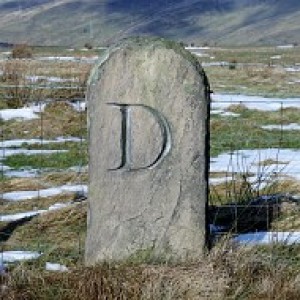Better Picnic Facilities at Barton Hall Today.
I work at Barton Hall for AHVLA as a Veterinary Officer. There are a few useful picnic tables for use in the better weather like today. The photo helps to show the south side of the VLA part of AHVLA. Barton Hall is a place with a lot of history.
Soon after the outbreak of World War II, it was decided, for the more effective protection of North West England, North Wales and the Western Approaches to form No.9 Fighter Group. Barton Hall was requisitioned for the Royal Air Force in July 1940 and on 9th August the Group Headquarters began to form, and set up the North West Filter Room within its precincts.
Throughout the ensuing three years valuable service was rendered in defence of the Liverpool, Manchester and Birmingham areas and, apart from much air/ sea rescue work in the Irish Sea and adjoining waters, the Group accounted for no less than 36 enemy aircraft destroyed, 10 probably destroyed and 27 damaged. Henceforth, as the threat to the North West receded, Headquarters 9 Group assumed responsibility for several Operational Training Units and by the time of its disbandonment on 17th September 1944, it had administered some forty stations, operating eighteen different types of aircraft flown by airmen of at least seven nations. His Royal Highness the Duke of Kent, Marshall of the Royal Air Force Sir Edwards Ellington, Air Marshall W. Sholto Douglas and the Air Minister Sir Archibald Sinclair, were amongst the most distinguished visitors to Barton hall during the war years.
During the latter part of 1944 Barton Hall functioned as an Education and Vocational Training Centre under the control of Headquarters No. 12 Group, but lapsed to a Care and Maintenance basis in 1945 following the start of demobilisation.
An 'Area Control Centre' was established at Barton Hall in the autumn of 1947, and shortly afterwards, on 10th November, the title was changed to 'Air Traffic Control Centre and Aeronautical Information centre Preston'. On 24th June 1948, the Ministry of Civil Aviation assumed responsibility for the ATCC and although administrative control of military personnel was then transferred to RAF Kirkham, a Royal Air Force element remained at Barton hall as an integral part of its operational function. By March 1949 an Operations Headquarters had formed at Barton Hall and remained there until 1961 after which it moved to Royal Air Force Weeton to become Northern Region Air Traffic Services Centre (NRATSC), an offspring of the National Air Traffic Control Services and Headquarters United Kingdom Air Traffic Services. HQ UKATS was subsequently renamed Headquarters Military Air Traffic Operations and in December 1964 NRATSC, increasing its role considerably, became known as Headquarters Military Air Traffic Operations Northern Region and moved to its new location at RAF Lindholme.
- 0
- 0
- Panasonic DMC-TZ20
- f/3.9
- 7mm
- 100

Comments
Sign in or get an account to comment.


